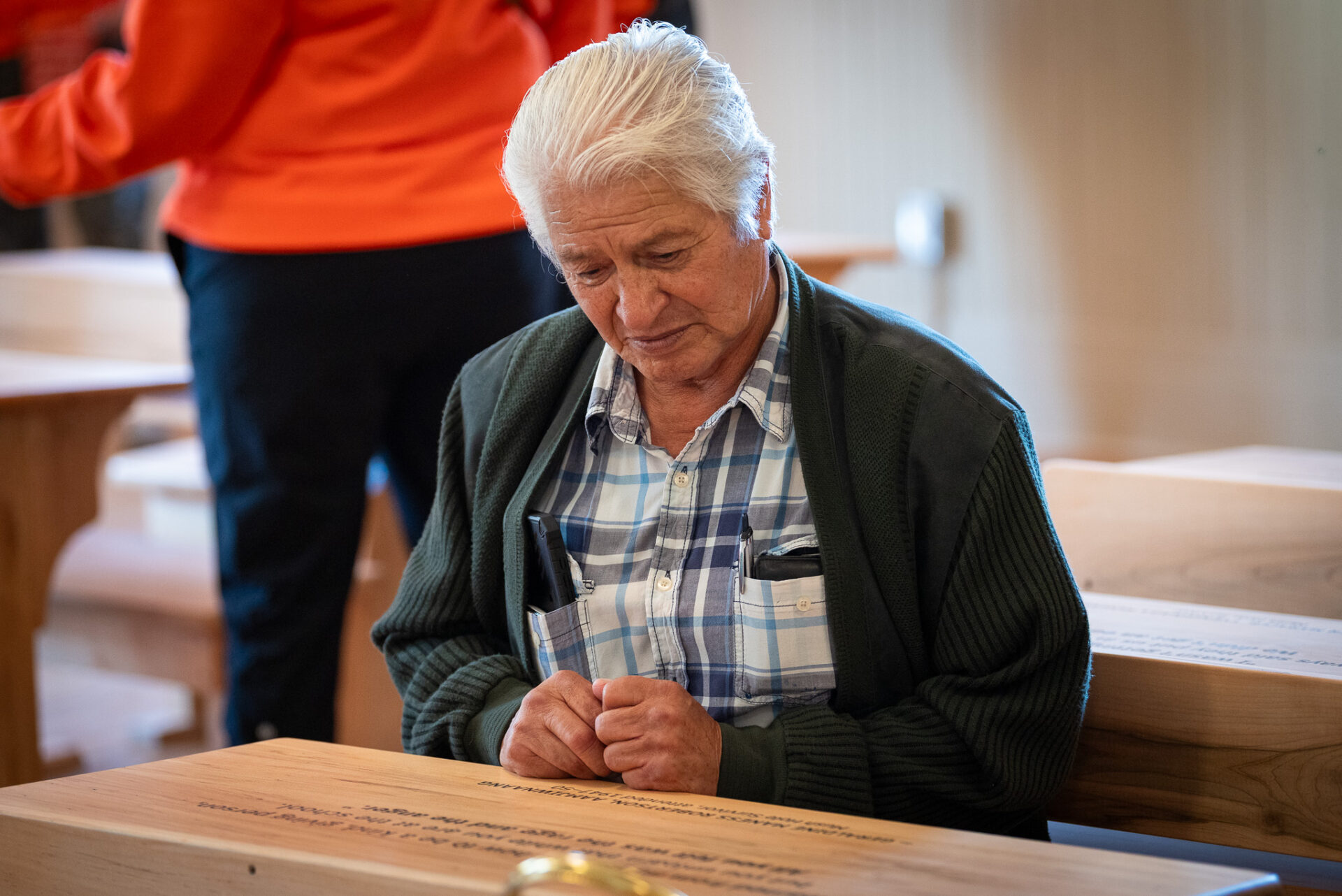The former Mohawk Institute Residential School officially re-opened to the public as an interpretive historic site and educational resource during Woodland Cultural Centre’s (WCC) National Day for Truth and Reconciliation event on Tuesday, September 30, 2025.
The Mohawk Institute was the oldest and longest-running residential school in Canada, operating from 1928 to 1970. First established by the New England Company, a British Anglican missionary society, the Canadian government assumed daily operations of the institute in 1929.
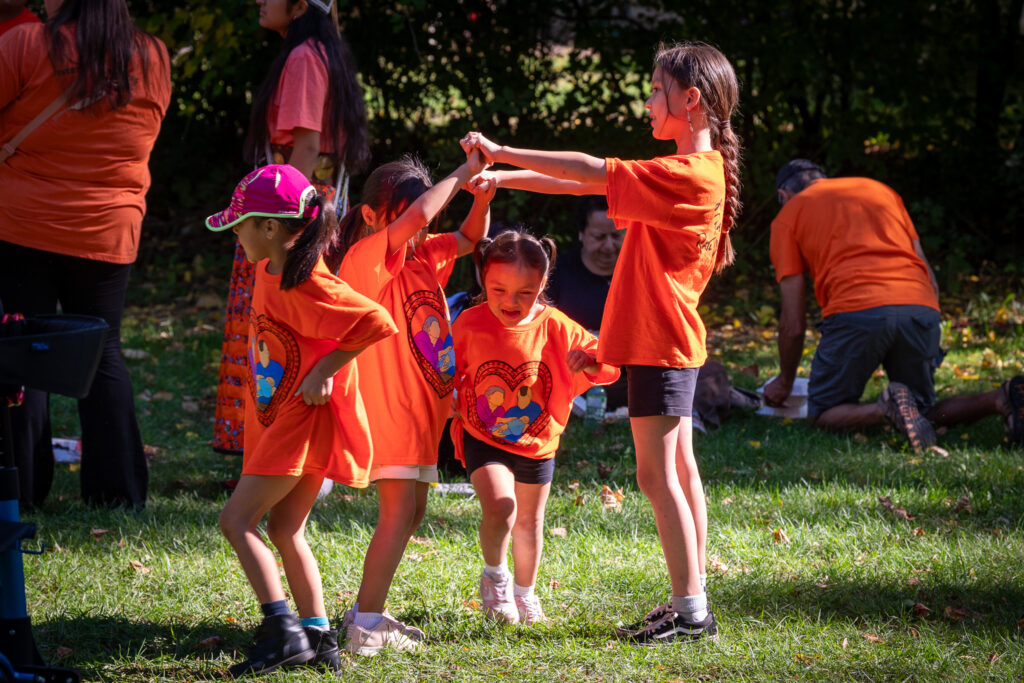
The residential school system was designed to assimilate Indigenous children by cutting ties to their language, culture, society and traditions. According to the Survivors’ Secretariat, an estimated 15,000 students from more than 60 communities were sent to the residential school, frequently known as the “Mush Hole.” Many survivors have since shared accounts of the the emotional, physical and sexual abuse endured during their time there. At least 105 children are estimated to have died while enrolled.
After its closure in 1970, the former institute sat unused for several decades, however in 2013, major roof leaks caused significant and costly damage to the building, prompting the WCC to conduct community consultations to determine whether to preserve the site. The response was overwhelming, 98 per cent of those consulted were in support of restoration efforts, leading to the launch of the Save the Evidence campaign.
Now, more than ten years and $26 million later, the building has been repaired to ensure the physical evidence of the residential school will never be forgotten.
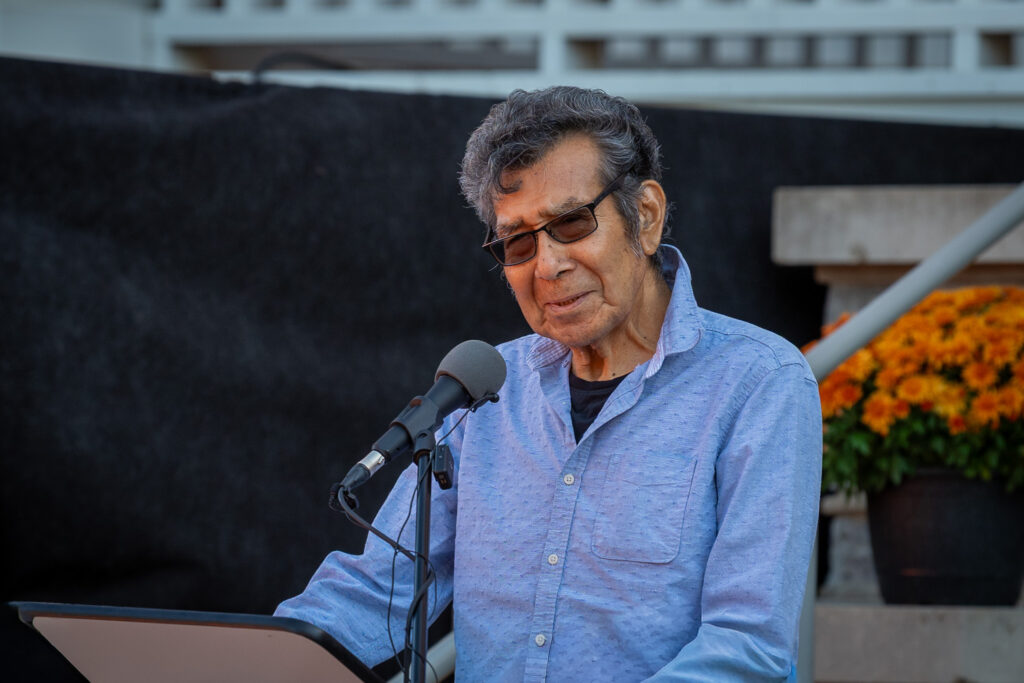
During the event, Geronimo Henry, who was dropped off at the Mohawk Institute on November 11, 1942, and was there until 1953, told the crowd that he eventually ran out of tears after 11 years at the school, saying that he never even went home for the summer.
“You don’t know what it’s like to have been in this residential school, and to suffer all the abuses that we went through. It’s bad enough if you were here one or two years, or even seven years, but imagine how much suffering I took when I was here 11 years,” he said. “Once she [his mother] left, I never saw her for 11 years. …There was a window down in the play room and I would be there just waiting for my mom to come and get me; I’d be there just wishing and hoping and praying but she never came. I used to cry and cry and cry, but after a while, I guess I just ran out of tears.”
The now 89-year-old said despite the building being referred to as a school, it was anything but.
“There was a big farm here … and guess who did the work? All us kids,” he said. “As soon as you became seven or eight, you were all out on the farm working at least half a day, and then you went to school half a day. We had to work for every little bit of food we got. And the girls, they had to wash all the dishes, make the beds, prepare all the meals and scrub the floors… So they had to work half a day also.”
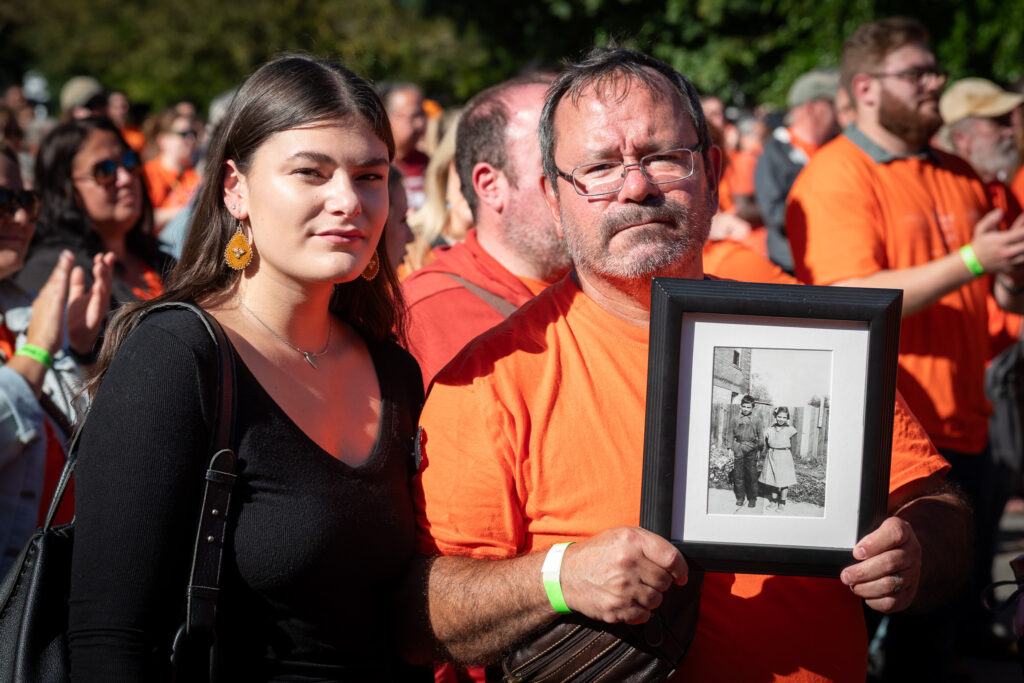
Henry went on to say that after he left the school and finally quit drinking years later, he went on a mission to find other Mush Hole survivors.
“I went to every reserve here in southern Ontario, from Quebec right down to Walpole Island and all the reserves in between. I put up flyers and said that we’re going to have a reunion,” he said. “…Maybe 70 or 80 kids came to that first Mush Hole reunion, and that’s when I asked them, ‘what have you been doing since you left?’ and the stories were just just about all the same [as mine]. They turned into alcoholics, a lot of them spent time in jail, they stole stuff and were fighting with the cops. That’s what you learned here, there was no law when we were here. Whoever was the strongest was who survived here.”
Later, Roberta Hill, who went to the Mohawk Institute at 6-years-old and was there from 1957 to 1961, said her time at the school was the saddest time of her life and all she wanted to do was return to her family.
“I remember looking out the window and I said, ‘I want to go home’, and the female supervisor said ‘you’re not ever going home.’”
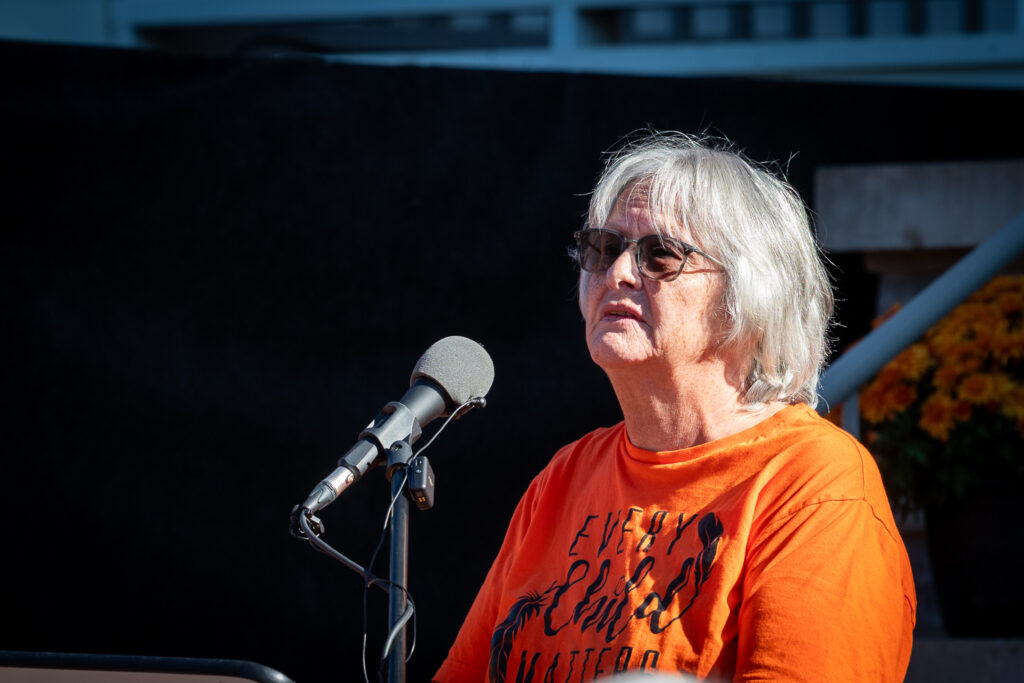
Hill said she didn’t know if the girls were as mean as the boys, there was still a lot of fighting.
“You had to learn to stay within your own group so maybe then you wouldn’t get smacked around,” she said. “So you grow up kind of rough, ugly, even mean sometimes, but that’s not the way we are; it’s just that these types of environments can create that because you grew up in violence and anger.”
Hill said that after leaving the Mohawk Institute, she was placed into foster care until she was 18. After 12 years of being gone, when she finally returned home to her younger brothers and sisters, she didn’t recognize them and they didn’t recognize her.
“That’s the other part of all of this, you have to adjust to the fact that your own community doesn’t know you and you don’t feel like you fit anywhere,” said Hill. “You get to drinking and misbehaving, that kind of stuff, and it took me ten years to straighten things out.”
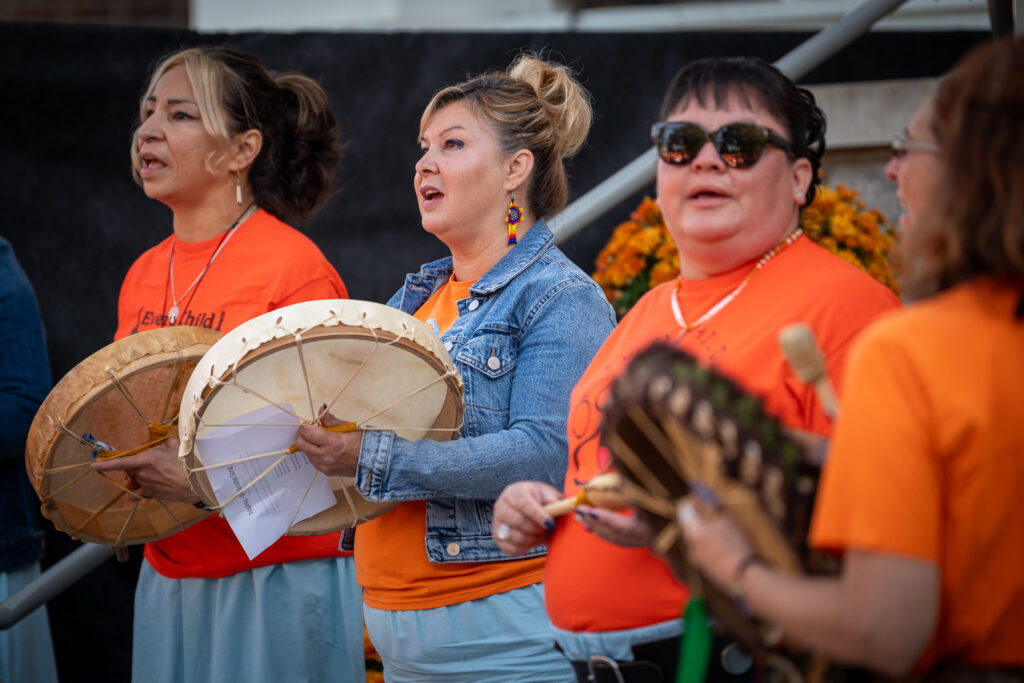
Hill went on to say that despite what she, and others, went through, she hoped that those in attendance would learn something from the tour and do better in the future.
“I’m hoping that you’ll learn from this and take away something from this school so that this never happens again,” said Hill.
Throughout the afternoon, thousands of residents and out-of-town visitors explored the former institute through self-guided tours, walking through the various hallways, boys’ dormitory, the laundry room, dining hall, and classroom, quietly taking in the different photos, audio recordings and the many quotes displayed among the walls and furniture.
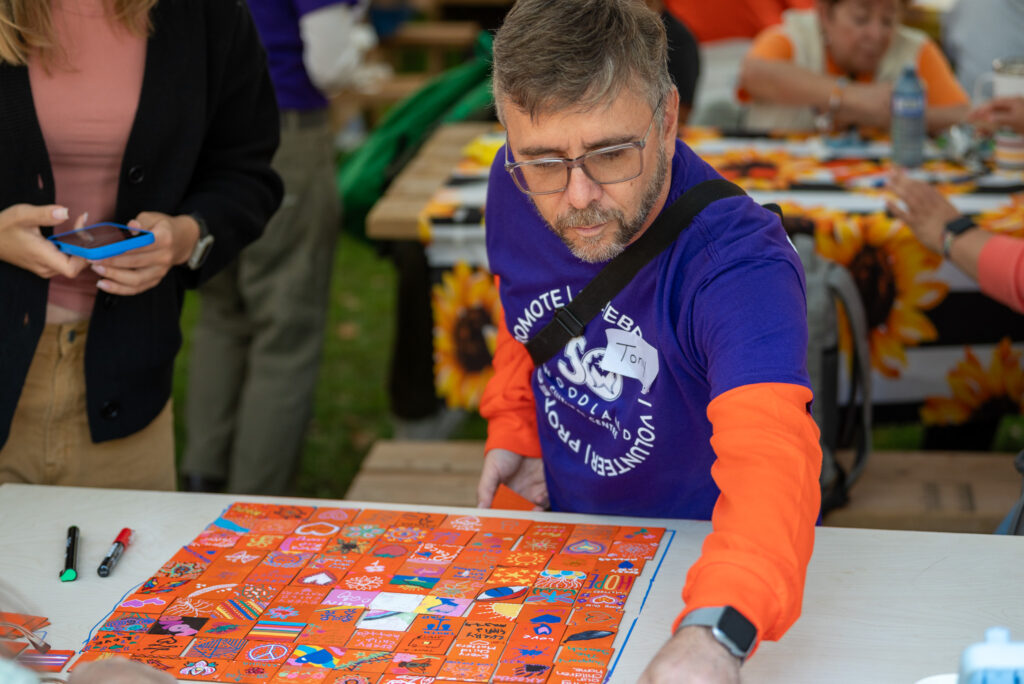
Over in the Woodland Cultural Centre, guests had the opportunity to attend one of three screenings of Silent No More, which were followed by question-and-answer sessions with survivors, and to walk through and admire the 65 unique contemporary works featured in the Indigenous Art 2025 exhibition.
Outside, visitors stopped by to visit with different community partners like the Survivors Secretariat, or the Gihekdagye Friendship Centre (BRISC), grab a bite to eat or a refreshing drink and take part in a community Orange Shirt mural activity.
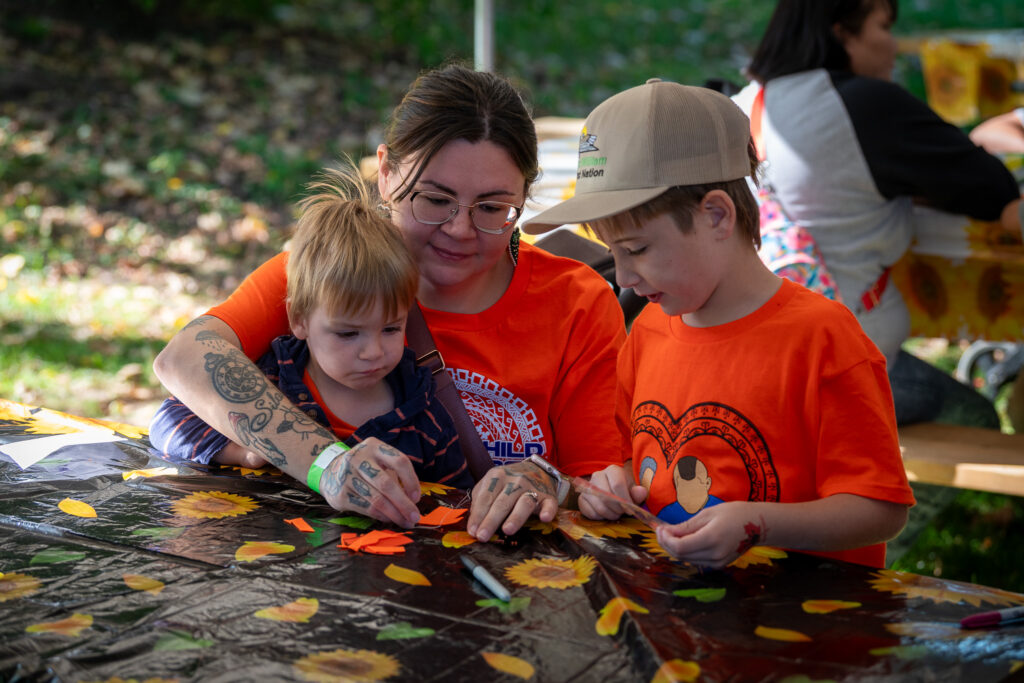
Sherri-Lynn Hill, the 59th elected Chief for Six Nations of the Grand River, said the day marked the start of a new era for the former Mohawk Institute.
“It [the Mohawk Institute] is envisioned to be a safe space for our Indian residential school survivors to tell their truth and for all to learn of a dark history, our shared history,” she said. “Today, the re-opening of this facility transforms it from a place of oppression to a sacred space of healing.”
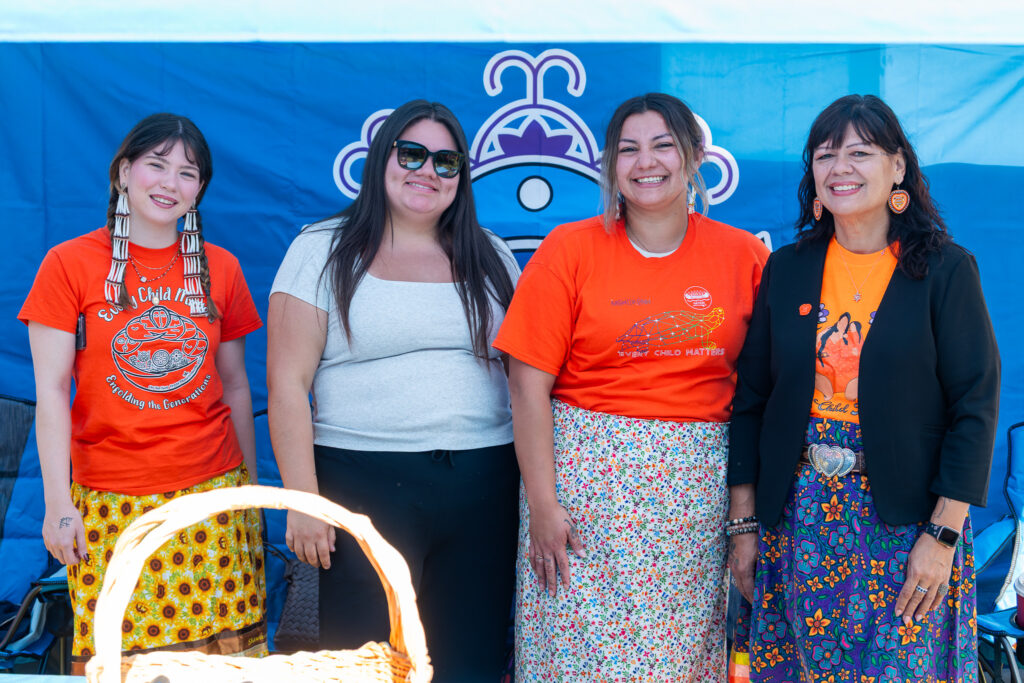
Kimberly De Jong’s reporting is funded by the Canadian government through its Local Journalism Initiative.The funding allows her to report rural and agricultural stories from Blandford-Blenheim and Brant County. Reach her at kimberly.dejong@brantbeacon.ca.
